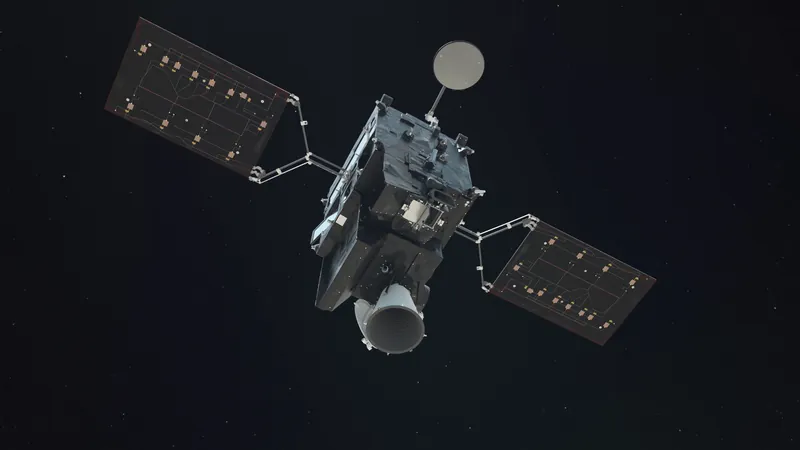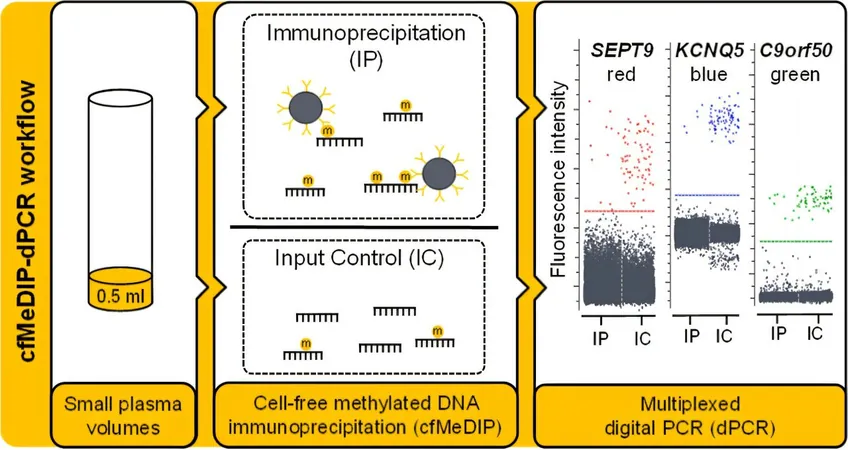
Revolutionizing Clean Air: The Game-Changing Sentinel-4 Mission
2025-06-04
Author: Wei Ling
A Beacon for Air Quality Monitoring
Set to launch in July 2025, the groundbreaking Copernicus Sentinel-4 mission will provide a cutting-edge solution for monitoring air quality over Europe and parts of northern Africa from an astonishing 36,000 kilometers above Earth. This ambitious project will offer unprecedented detail in tracking major air pollutants, marking a significant leap forward in air quality forecasting.
The Power of Geostationary Orbit
What makes Sentinel-4 revolutionary is its geostationary position—the first of its kind for European air quality measurement. By remaining fixed above the equator, the mission can monitor pollution levels continuously and deliver data in near real-time, updating every hour. This capability is crucial for understanding rapidly changing air quality due to factors like traffic and weather, as noted by Ben Veihelmann, ESA's Mission Scientist: "This is a complete game changer for air quality forecasting."
Innovation at Its Core
Sentinel-4 is not just a standalone mission; it synergistically integrates with the Meteosat Third Generation Sounder (MTG-S) satellite. This innovative two-missions-in-one approach maximizes resources, pairing atmospheric monitoring with meteorological data. Giorgio Bagnasco, Project Manager, emphasizes that this collaboration exemplifies how space technology can be both efficient and multifaceted.
A Global Initiative
Sentinel-4 doesn't operate in isolation. As part of a global constellation that includes Korea's GEMS and NASA's TEMPO, it provides robust coverage across densely populated areas. Together, these satellites form a powerful network for tracking air quality across continents, underlining that pollution knows no borders.
Transforming Lives with Data
The insights gleaned from Sentinel-4 will be invaluable, offering free access to air quality data for diverse users—from scientists to public health officials. Its observations will boost air quality services and facilitate compliance with environmental regulations. Beyond monitoring, its data will help inform crucial public health decisions, offering pollution forecasts and health alerts for vulnerable populations.
How It Works: A Scientific Marvel
Utilizing a state-of-the-art UVN spectrometer, Sentinel-4 captures light from both the Sun and Earth's surface. This light carries distinct signatures from trace gases, allowing scientists to estimate pollutants like nitrogen dioxide and ozone with astonishing accuracy from space. "It's like finding a needle in a haystack," states Giorgio. With its immense reach, this mission will shape air quality policies and protect public health across Europe.
Anticipating the Launch
With its expected launch on the MTG-S satellite not before July 2025, the Copernicus Sentinel-4 mission is poised to transform the landscape of air quality monitoring, ultimately leading to healthier lives and a cleaner environment.



 Brasil (PT)
Brasil (PT)
 Canada (EN)
Canada (EN)
 Chile (ES)
Chile (ES)
 Česko (CS)
Česko (CS)
 대한민국 (KO)
대한민국 (KO)
 España (ES)
España (ES)
 France (FR)
France (FR)
 Hong Kong (EN)
Hong Kong (EN)
 Italia (IT)
Italia (IT)
 日本 (JA)
日本 (JA)
 Magyarország (HU)
Magyarország (HU)
 Norge (NO)
Norge (NO)
 Polska (PL)
Polska (PL)
 Schweiz (DE)
Schweiz (DE)
 Singapore (EN)
Singapore (EN)
 Sverige (SV)
Sverige (SV)
 Suomi (FI)
Suomi (FI)
 Türkiye (TR)
Türkiye (TR)
 الإمارات العربية المتحدة (AR)
الإمارات العربية المتحدة (AR)